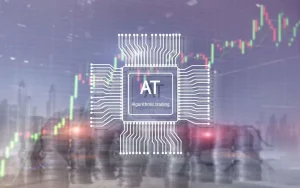Consensus Proof of Work (PoW) is the system of choice for many popular digital coins. Such a structure controls operations and adds elements to the blockchain. This concept appeared back in the 90s. Later, Satoshi Nakatoma spoke about it in his text about Bitcoin. Advanced virtual assets such as Litecoin and Bitcoin include PoW mechanics. Previously, Ethereum utilized the same system, but later, it switched to Proof of Stake (PoS). In such a blog post, we will analyze the features of PoW and why this system is valuable today.
Proof of Work: What Is It?
Proof of work or simply PoW is a framework that requires network representatives to solve non-standard math problems to confirm their legal status and verify operation. The procedure for solving these tasks is called mining. Each mining gadget receives a certain amount of digital assets.
The key task of PoW is to build a secure system where operations and insights cannot be adjusted or hacked. When a person initiates a deal, all agreement data is programmed into the system. The user aims to solve a math problem associated with a particular package of conditions.
All conditions are displayed in the registry, which is formed as a database, where any activity in the system is recorded. PoW controls the security of every operation on the blockchain, which limits the use of false insights and fake deal records.


Turnkey Brokerage Solution For Your Business
Get the most profitable fully licensed fx/crypto brokerage software or ready-to-operate business in 48 hours. Best-in-class web & mobile trading platforms, sales-driven CRM, full integration with MT4/5, and 150+ payment providers.
Understanding the Mechanism of Proof of Work
Now that we’ve got a handle on PoW let’s look at its basic principles of operation on the blockchain. In simple words, a blockchain is a distributed ledger containing datasets for digital assets. Each element of a PoW crypto coins operation receives an original cache. The user must provide a target hash that is less than or equal to the block hash to validate it.
Such activity requires the use of high-performance mining equipment. The person who becomes the first miner obtains the target hash, allowing him to change the blockchain and earn income.
Beginners are often interested in what problems miners should solve. The so-called hash they generate transforms the initial database into a random subsequence of numbers and signs.
The general procedure for continuously adding elements to the network requires PoW. Miners, as primary representatives of the crypto space, bring blocks to life. Whenever these entities provide a novel correct Proof of Work, an additional element appears on the network.
Users receive financial rewards only after other system members confirm the information implemented in the structure is correct.
Example of Proof of Work
The PoW mechanics underlie digital money, which forms more than 60% of the entire capitalization in the crypto area. Among the most famous cryptocurrencies that rely on this principle are:
- Bitcoin: the first virtual money was presented to society to function as money and a payment method independent of individuals or firms.
- Dogecoin: a crypto coin based on the Doge meme launched as a joke but has reached significant heights.
- Bitcoin Cash: a fork based on Bitcoin which appeared in 2017
- Litecoin: a peer-to-peer cyber cash that provides instant and almost free operations between entities, regardless of location. Below, we will look at how Bitcoin utilizes the idea of PoW to guarantee the integrity of the block system.
When operations with BTC occur, each procedure goes through safety monitoring; then, they are added to the block to launch crypto mining. The PoW mechanics of digital assets build a hash for the block. The structure that underlies Bitcoin is called SHA-256; it offers hashes that are 64 characters long.
The miner aims to be the first to offer the optimal hash, which is lower than the block hash. The winner will have a chance to add such operations block to the Bitcoin ecosystem. They are also entitled to income from newly generated coins and operation commissions. Let us remind you Bitcoin has a fixed volume of no more than 21 million; however, after reaching this value, miners will continue to obtain operation commissions for their activity.
The PoW structure that underlies Bitcoin allows the implementation of novel components every 10 minutes. The system corrects elements’ difficulty levels based on how members interact with them. If the pace slows down, the tasks become more straightforward.

Proof of Work vs. Proof of Stake
There are several consensus technologies in the crypto universe: Proof of Work and Proof of Stake; the latter was first used in 2011 to create the crypto coin Peercoin.
The main distinction between PoW vs PoS is that the latest does not involve any computational activity. The applicant for adding a block and obtaining income is chosen randomly among participants who have reserved (staked) a certain sum of relevant digital assets. Your chances of being selected depend on your bid size, competitors’ bids, and the age of your bid.
The functionality of the PoS structure allows you to neutralize the critical negative aspects PoW faces. Since there is no colossal sum of computation, buying expensive mining equipment and spending a lot of electricity is unnecessary, which avoids centralization. In terms of security, a hacker must accumulate more than 50% of crypto coins to attack 51%, which is irrational as he will face significant losses.
It is impossible to say which option is preferable since each has strengths and weaknesses.
Proof of Work and Mining
Let’s talk about how a standard bank account works. If you decide to deposit a check, how will you know your account will increase by this exact amount? How can the person who gave you the check understand the sum of money indicated on the payment document was withdrawn from him? The bank controls the validity of all manipulations.
If you interact with virtual assets and other decentralized finance (DeFi), then in this environment, there are no economic institutions to track the movement of capital. Simultaneously, PoW and miners guarantee limpid and correct operations. When analyzing the Proof of Work blockchain, we will evaluate miners as their critical helpers who guarantee the coordinated and stable performance of the ecosystem.
PoW regulations require miners to utilize computing power to profit from such functionality. Let’s consider the critical phases of the scheme:
- Grouping operations: market participants buy and sell crypto coins; all data about this goes into a single block.
- Miners compete to see who will interact with the block: They must demonstrate they have completed the computational procedures to begin processing the block of activities.
- Selecting a Single Miner: You may notice significant randomness in choosing the rep to deal with the block. The triumphant of this selection will receive additional virtual assets and can add a part to the structure.
As we know, miners spend a lot of capital purchasing and setting up equipment and paying electricity bills. Hence, they are interested in fully checking each operation.
Why is Proof Of Work Important?
Double-spending was the main trouble that limited the rapid development of virtual assets early. Crypto coins are essentially data, so a structure was needed to prevent entities from spending the same coins in various places before the operation appeared in the distributed ledger.
Spending a banknote twice in two stores is impossible if we’re talking about standard currency. Still, if you’ve ever made multiple copies of the same computer file, you’ll probably realize how you can spend virtual capital not once or twice but much more.
The PoW approach solved the trouble of double-spending. By incentivizing market members to monitor the correctness of novel crypto transactions before they are added to the distributed ledger, this algorithm helps prevent double expenditures.
Let’s look at other profits of PoW:
- Such mechanics guarantee transparency and safety.
- PoW restricts the risks of adding fraudulent deals to the structure.
- Blockchain allows anyone to become a member of decentralized networks and earn substantial amounts. It is an excellent incentive to develop after joining the system.
- This approach promotes the implementation of renewable energy solutions.
Proof of Work crypto is an efficient consensus algorithm that has significantly impacted the virtual asset universe, shaping a trusted and decentralized environment. With computing processes, PoW guarantees the correctness of procedures and limits any fraudulent manipulations in the blockchain structure.
Although this structure has proven effective in many sectors, the significant electrical energy consumption of PoW is a concern, especially in the long term. Research continues to create more energy-efficient solutions.






